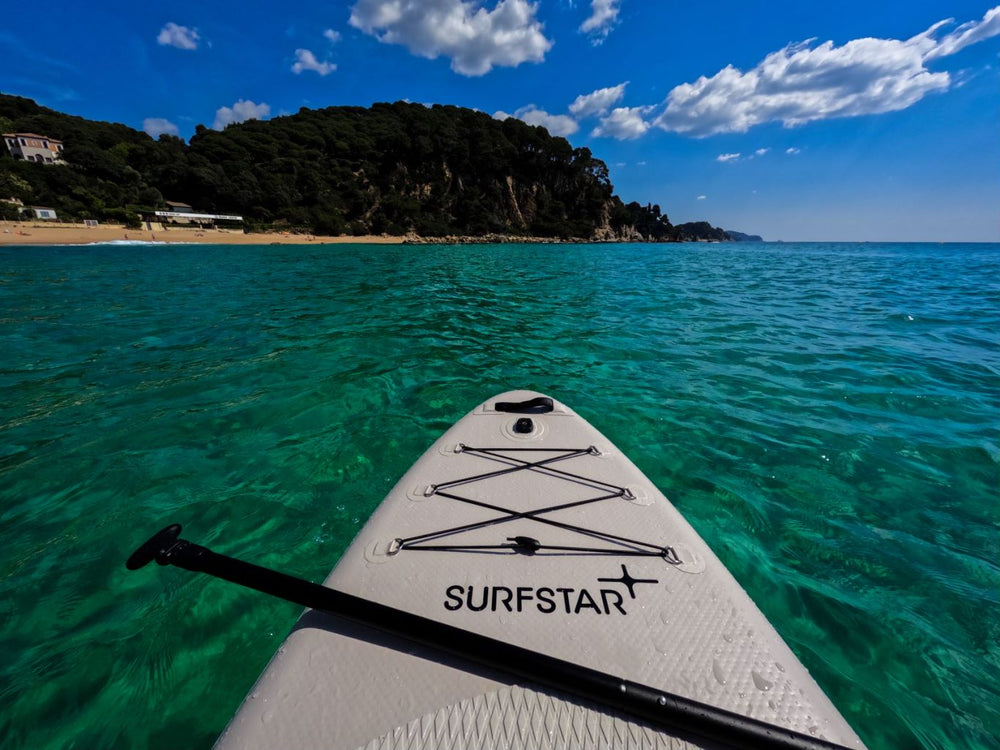Interesting SUP Facts You Probably Didn’t Know
Greetings, adventure seekers. It's good to have you back! We hope that this new year has been good to you so far and that it has inspired you to appreciate and seek new adventures each day. If you enjoy paddleboarding and are considering investing in some of the best inflatable SUP boards available, we believe it is important that you learn more about this amazing activity, so we thought it would be fun to share some of our favourite fun facts about SUP with you. Read on to learn more!
SUP has a long and fascinating history. The sport has existed in various forms and for various reasons for thousands of years. So, how about we start from the beginning?
Paddleboarding Has Been Around For Thousands Of Years
The act of propelling oneself on a floating board can be traced back thousands of years, with instances found in Hawaii, Israel, Italy, Israel, and Peru. Humans have been standing on water as early as 3,000 years ago. Peruvian fishermen were among the first to be identified as stand-up paddlers. They used bamboo paddles to propel their reed boats through the waves of the Pacific Ocean.
Their paddles were made of a split bamboo shaft with two ends, similar to those found on modern kayaks. They would ride the reeds as if they were horses while paddling out. It wasn't until the return trip that the real fun of being on a paddle board began.
The ancient Peruvian fishermen not only fished with these vessels, but they also found a way to have fun on them, much like today's surfers. They would use the waves to help them return to the sea as they paddled towards land's shore. The more experienced boatmen allegedly used their paddles to propel themselves while standing up, and this was a way to either showcase their skills or have fun. SUP lovers have always known how to have a good time, even in the early days!
Modern-day SUP: Where It All Began
Pioneering stand-up paddleboarder John Zapotocky is regarded as the father of modern-day stand-up paddleboarding. He spent more than 55 years surfing and paddleboarding. He kept surfing and paddling even in his 90s, making him the oldest stand-up paddle surfer ever to have done it.
Modern-day SUP, on the other hand, was first discovered in Hawaii in the 1940s when instructors like Duke Kahanamoku would stand on their boards to get a better view of the waves and the surfers surrounding them. This simple act seemed normal, but Duke had no idea he was about to invent a new sport. In the early 2000s, the sport exploded in popularity in California. SUP was later on taught in Hawaii surf schools in the 1990s, and it quickly became a popular activity.
Did You Know That There Are SUP Guinness World Records?
Well, it's no surprise that SUP has a number of world records, seeing as there can be a world record in just about any sport. On September 10th, 2017, the Vladivostok SUP community held Russia's greatest parade of stand-up paddleboards, with a total of 844 participants. There's also a female who holds the record for the longest distance on a SUP, which is 169.23km.
What makes SUPing Different from Surfing?
Paddle boarding and surfing may appear to be quite similar or very dissimilar to certain people. Surfboards are smaller than paddleboards in volume. SUP boards have a higher volume since you need more buoyancy in order to stay atop the board while paddling around. You also need a paddle in order to move around. You don't need a paddle to go surfing. Your paddle board can be used to surf as well. Although paddleboards are not intended for large waves, they can still be used to surf.
Well, here are a few more fun facts...
- Finding a sport that can be enjoyed by people of all ages is almost impossible. However, SUP is the perfect activity for everyone. In 2009, SUP became an official sport for both recreational and competitive purposes. Since its inception in 2009, stand-up paddling (SUP) has seen explosive growth in the United States. It is estimated that there are more than 150,000 SUP enthusiasts in the United States alone.
- SUP has introduced surfing to far more countries than ever before, many of which would not normally be considered surfing destinations. Since the ISA (International Surfing Association) added SUP, they have been able to develop their international organization, which now includes landlocked states and countries. As a result of SUP, ISA now has a total membership of 106 countries.
- A SUP can also be used for land-locked sports! Canoe and kayak lovers throughout the world are increasingly embracing stand-up paddleboarding (SUP) as a way to explore their local waterways.
- Did you know that SUPs are constructed in the exact opposite way to kayaks? They're constructed from the inside out. It is important to have a stable base, so fibreglass is wrapped around foam and then a textured mat is added (for hard boards, inflatable boards use drop-stitch materials which makes it lighter and inflatable).
Well, there you go! The history of SUP, as well as some fascinating facts! How many of these did you know already? Which fact did you find surprising? Remember, these are only a few out of the many interesting facts about SUP. Go out and discover new things, and never stop learning! We hope that after reading this blog, you will be even more eager to give stand-up paddle boarding a try, or maybe get your very own inflatable paddleboard!
Please don't hesitate to contact us if you have any questions or comments concerning stand-up paddleboarding. We've got all the information you need to get ready for your next big adventure, so look no further!





Leave a comment